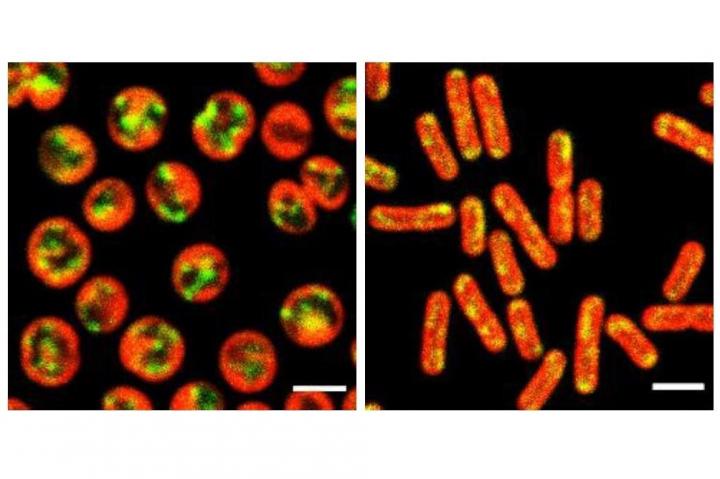
Credit: Figure: Conrad Mullineaux
In photosynthesis, solar energy is converted into chemical energy, which is then used in nature to produce organic molecules from carbon dioxide. In plants, algae and cyanobacteria, the key photosynthesis reactions take place in two complex structures known as photosystems. These are located in a special membrane system, the thylakoids. However, many details of their molecular structure and the way the proteins are incorporated into the membranes have yet to be explored. A team led by Professor Conrad Mullineaux from the Institute of Biology and Chemistry at Queen Mary University London, UK, Professor Annegret Wilde and Professor Wolfgang Hess from the Institute of Biology III at the University of Freiburg and Professor Satoru Watanabe from the Institute of Biosciences at the Agricultural University of Tokyo, Japan, has published a study in the current issue of Nature Plants: The mRNAs are transported to the thylakoid membranes and the respective proteins are produced there on the spot.
The researchers used molecular genetic, bioinformatics and high-resolution microscopic approaches at the single cell level for their investigations. The results confirm that mRNA molecules encode much more than just the sequence of the protein. They also carry signals that appear to control the position and coordination of the photosystem structure. The team was able to identify two proteins likely to be involved in this process by interacting with these mRNAs. The researchers say this opens the way to a detailed understanding of the molecular mechanisms involved and provides new approaches to make these processes useful for photobiotechnology.
###
Conrad Mullineaux was a Fellow at the Freiburg Institute for Advanced Studies (FRIAS). The teams of Annegret Wilde from the Research Group for Molecular Genetics of Prokaryotes and of Wolfgang Hess from the Research Group for Genetics and Experimental Bioinformatics are part of the Research Training Group 2344 MeInBio – BioInMe: Investigation of Spatial and Temporal Dynamics of Gene Regulation with High-Resolution High-Throughput Methods, funded by the German Research Foundation. Satoru Watanabe conducted research during a one-year stay as a Research Fellow at the University of Freiburg.
Contact:
Professor Dr. Annegret Wilde
Institute of Biology III
University of Freiburg
Phone: 0761/203-97828
E-Mail: [email protected]
Professor Dr. Wolfgang Hess
Institute of Biology III
University of Freiburg
Phone: 0761/203-2796
E-Mail: [email protected]
Media Contact
Professor Dr. Annegret Wilde
[email protected]
Original Source
https:/
Related Journal Article
http://dx.




